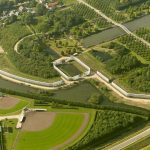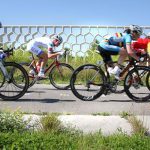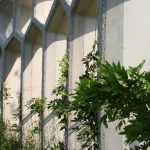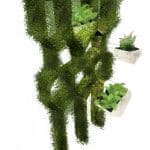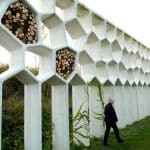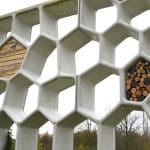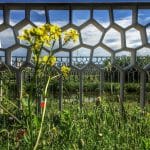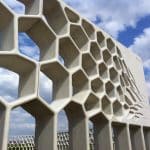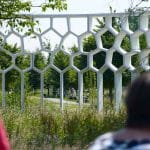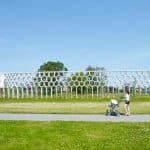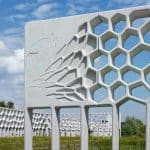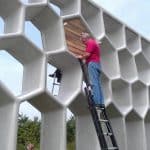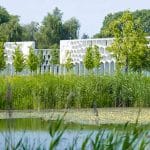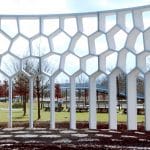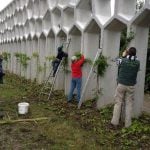In the early stage of the design process for Máximapark it was decided that the most frequently visited and central part of the Park should be framed with an iconic pergola. This decision resulted in the creation of the ‘Binnenhof’ Courtyard and the distinctive Park Pergola.
The Municipality of Utrecht insisted that these two park elements must meet a high set of standards regarding sustainability, visual quality, maintenance and have a lifespan of a 100 years. The route and building height of the Park Pergola were also fixed in the zoning plan.
The technical and architectural design was created to meet these preconditions and subsequently permission was granted to procure and construct the first kilometer of the Pergola. The first phase of the Pergola was completed in 2013 and later that year climbing plants were planted at the base of every column.
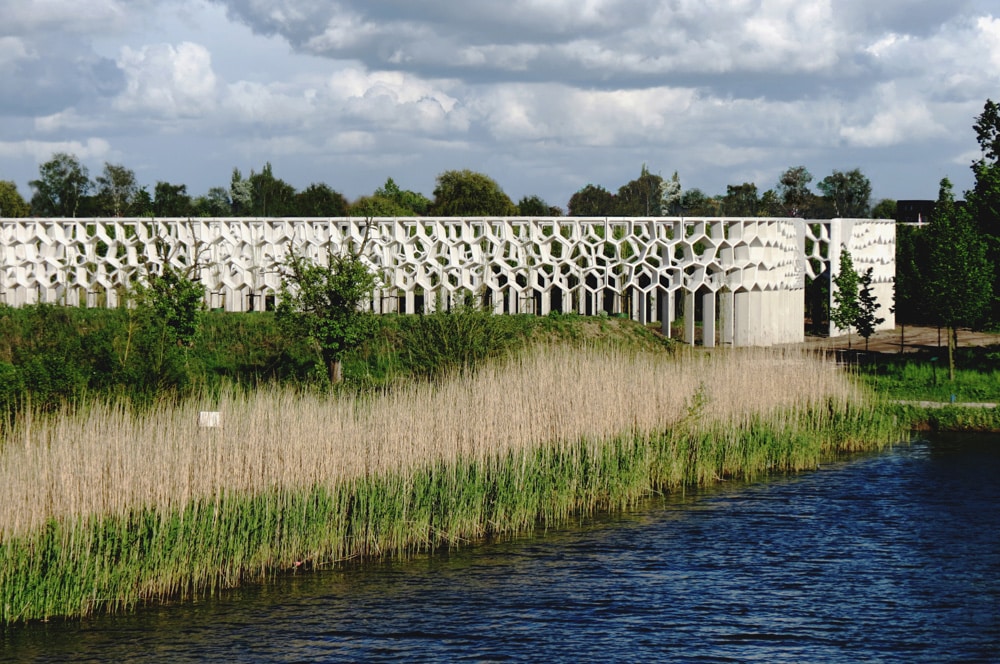
Cutting edge structural performance
Unlike other pergola structures made of wood, wood and brickwork, steel, netting or steel cables, this six meter high Pergola is designed as individual but interchangeable precast concrete element that can be combined to form a cohesive structure. The advantages of concrete in terms of durability and repetition have been fully exploited and the material’s possibilities with respect to its sculptural qualities – curves, facets, shadow, texture, relief and embossing work have also been explored at length. By working extensively on molding and casting techniques and devoting careful attention to the quality of the construction during manufacturing, the limits concerning concrete finishing and density were sought. The resulting precast elements are very slim and extremely graceful. The Pergola’s silky smooth finish and striking white color make it soft and touchable, like ivory.
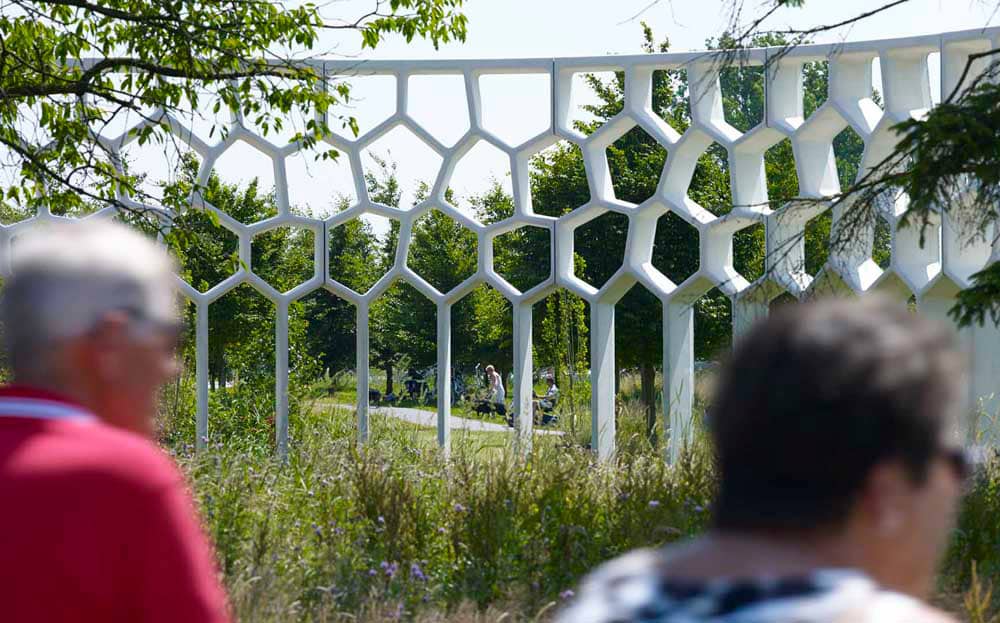
Apart from the standard elements (600 x 330 x 80 cm; 3.5 tons), curved elements have also been custom designed and manufactured. As a result the Pergola does not follow a straight line or a square shape. By using both inner and outer curved elements the Pergola can wind through old plot patterns and woodlands. The visitor never gets to see the beginning nor the end, as the structure continually disappears from one’s perspective. The curved elements also take on a very sculptural quality because the honeycomb structure appears to rotate in the light.
Front and Backside
Although the Park Pergola is currently naked in time it will be overgrown with a verdant cloak of climbing plants along its entire length. Winding vines will climb onto the smooth side of the Park Pergola. While the coarser concrete texture on the inner side of the Park Pergola, a result of a lava stone additive, will encourage the growth of epiphytic plants, moss and sedum. The legibility of the ‘Inside’ and ‘Outside’ of the pergola will help park visitors to orient themselves.
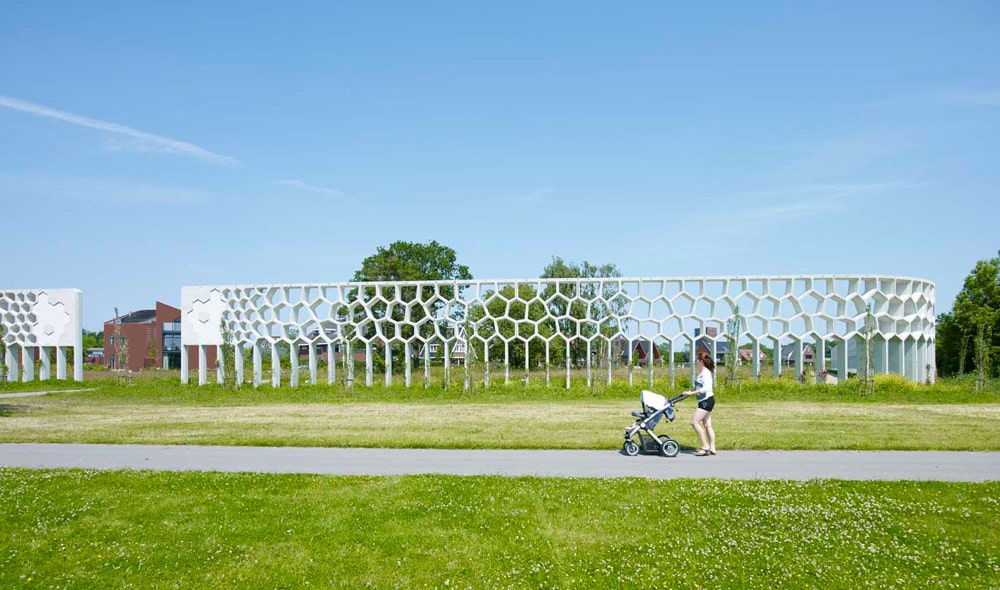
M.C. Esscher meets Jac. P. Thijsse
Each time the Pergola crosses the main path system or the waterways, two end pieces are installed which form a gateway. These end pieces have been formed by combining a ‘transition element’ and an ‘end element’ which reflect the path of the Pergola. The end elements feature an M.C.Escher-like relief which sees the honeycomb pattern transform into an animal which is endemic to the park: a pike, bat, dragonfly, green frog and so forth.
Every ‘gate’ has a unique left and right end element, for which individual molds have been manufactured. The transition elements (located between the standard Pergola element and the unique end element) also have a ‘left’ and a ‘right’ version, but they are repeated at every gate. The Water Gates however, are special. Here, the end elements have been ‘lengthened’ and their legs run into the water. The combination of these elements create a ‘water patio’, which has been realized in phase one of construction.
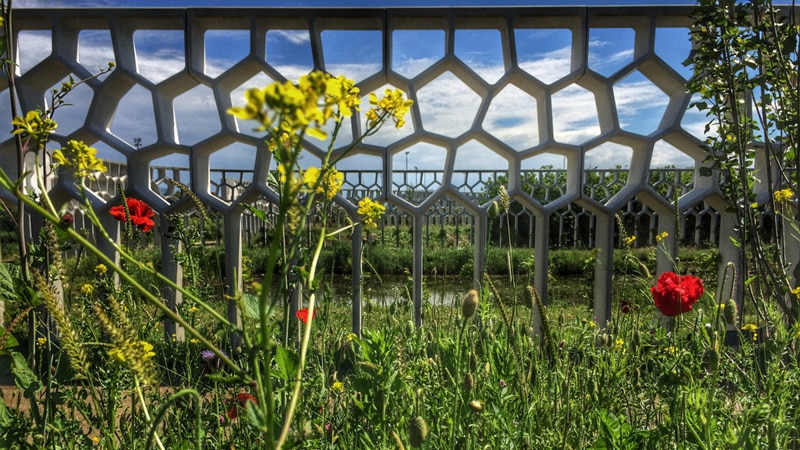
Ecology and Participation
The Pergola functions as a veil that is drawn around the ‘Binnenhof’ Courtyard. The legs form gates inviting the visitor to enter anywhere they please. Historical parks have gates and walls. This park shares the same tradition of enclosure and feeling of ‘being inside’, but adopts a more democratic approach: you can enter anywhere. Some of the legs have a small protrusion which can be used as seating.
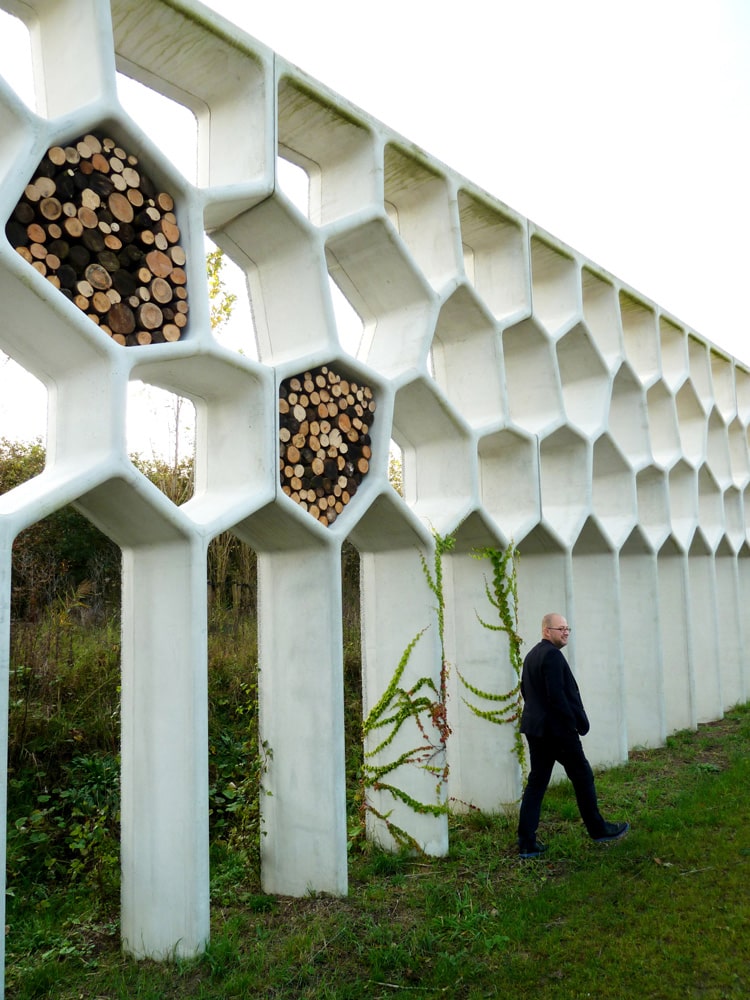
The Pergola serves both an ecological and botanical function within the park program as large collections of climbing plants have been planted along the base of the Pergola. Near the Lily Pond a section of the Pergola has been specifically been designated for rich flowering species, while other parts are more ‘quiet’ to create ecological differentiation. In the ‘quieter’ areas the honeycomb structure acts as a frame in which special bat boxes, nesting boxes for owls and substrate bins for rare wall vegetation (ferns) will be placed. School groups and the ‘Friends of the Máximapark’ association will participate in maintenance of these bins and boxes.
Project Details:
Location: Máximapark– Utrecht, The Netherlands
Type: Landscaping – Public
Client: Project Development Leidsche Rijn
Design: 1997-2013
Architects: West 8
In association with: Project Bureau Leidsche Rijn , ABT, Ed. Züblin AG, Verhoeven Timmerfabriek Nederland bv, and Van Wijk Nieuwegein bv

